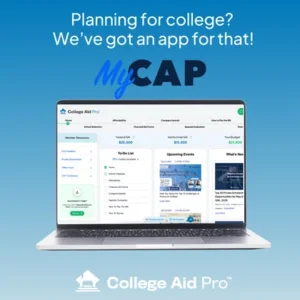
7 Things to Know About Competitive Merit Scholarships (So You Don’t Bet Your Budget on a Maybe)
When people hear “merit scholarships,” they picture a brainy showdown where only a few walk away with the prize. It’s not quite reality TV, but competitive merit scholarships do involve—well—competition. They’re real money, offered by real colleges, to a limited slice of applicants. The catch is in the word competitive. Even if your student checks every box, a committee still decides who gets the award.
Here’s a clear, no-fluff guide to how these scholarships work, the main types you’ll see, whether they’re worth the effort, and how to find the best-fit opportunities without turning your kitchen table into a spreadsheet graveyard.
1) What “Competitive” Actually Means
Competitive merit scholarships are gift aid from colleges that only some applicants receive. Unlike automatic merit scholarships—where meeting published criteria typically triggers an award—competitive scholarships require an extra step (or three): selection by a committee, an interview, a scholarship weekend, or additional essays. Your student might look great on paper and still miss out. That’s not defeatist; it’s just smart planning.
Bottom line: treat competitive awards like a bonus, not the foundation of your affordability plan.
2) The 3 Types You’ll Run Into
A. “Close-to-Automatic” Scholarships
These look automatic at first, but watch for wording like “may be eligible” or “eligible to be considered.” That’s code for “not guaranteed.” Schools might list GPA or test-score thresholds and then select from that pool.
How to play it:
-
Don’t count this money until it’s in writing.
-
Meet the thresholds early and apply on time, then wait and see.
B. “Black Box” Scholarships
Think of these as input → mystery → output. The school publishes basic eligibility, but the selection criteria are vague. Maybe they’re balancing majors, campus needs, or leadership profiles. You won’t know.
How to play it:
-
Put your best story forward: impact, leadership, outcomes.
-
Weigh the award size against the effort. If it’s lots of work for a small payoff, prioritize elsewhere.
C. Competition Scholarships
The most transparent—and often the most work. Expect extra essays, interviews, exams, a portfolio, or a scholarship weekend. A few winners may land big money; others might get smaller awards.
How to play it:
-
Start early; deadlines can be weeks ahead of regular decision dates.
-
Prep for interviews and essays like a job search—mock questions, tight storytelling, measurable results.
3) Should You Spend Time on These? (Usually, Yes.)
Competitive merit scholarships can absolutely move the needle. Just be honest about the odds and effort. They’re ideal when:
-
The potential award would meaningfully change affordability.
-
Your student’s strengths (leadership, service, research, arts, entrepreneurship) line up with the scholarship’s vibe.
-
The application materials overlap with work you’re already doing (e.g., honors essays).
Be cautious when:
-
A college is only affordable if you win one specific competitive award.
-
The process is opaque and the payout is modest.
-
The time investment steals focus from schools more likely to be generous overall.
4) Automatic vs. Competitive (Don’t Mix Them Up)
-
Automatic merit scholarships: meet published criteria → usually receive the listed award. You can include these in your baseline affordability planning.
-
Competitive merit scholarships: meet criteria → still need to be selected. Treat these as upside, not guaranteed discounts.
That one distinction prevents a lot of heartbreak—and hasty deposits.
5) A Practical Game Plan That Works
Build the list for affordability first. Assume zero competitive money and ask, “Is this school still realistic?” If not, label it a financial reach and proceed accordingly.
Prioritize by ROI.
-
Big awards + clear process + reasonable effort = higher priority.
-
Small awards + murky process + heavy lift = lower priority.
Make a separate scholarship calendar.
-
Track each scholarship’s deadline, requirements, and notification dates.
-
Set internal deadlines 5–7 days early. (Because printers jam and essays evolve.)
Sharpen the story.
-
Essays and interviews reward clarity: what your student did, why it mattered, and what changed because of it.
-
Use numbers and outcomes—“raised $8,200,” “grew tutoring program from 6 to 28 students,” “published original research,” etc.
Measure as you go.
-
Keep quick notes: submitted, interview invite, result, award amount.
-
Use that data to decide where the next hour of effort should go.
6) Quick Answers to Common Questions
Can you stack automatic and competitive awards at the same school?
Sometimes. Policies vary, and some scholarships don’t stack with others. Read the fine print or call financial aid.
Test optional and competitive awards—good idea?
It depends on the scholarship. If scores are a listed factor and your student’s are strong, submitting them can help.
What do committees actually care about?
Evidence of impact (not just activity), academic excellence relative to the school’s pool, authentic voice in essays, and alignment with the college’s mission or program goals.
7) Finding Competitive Merit Scholarships Without Going Cross-Eyed
Colleges are the biggest source of competitive merit scholarships—but they hide details across admissions pages, honors programs, and academic departments. Manually tracking eligibility, deadlines, and award amounts is a full-time job.
Use MyCAP to make this easy.
Our college-based scholarship search tool pulls together competitive and automatic awards, updates them regularly, and helps you filter by fit. Save scholarships to a list, track deadlines, and compare options without building a monster spreadsheet. If your student is ready to take a swing at competitive awards, MyCAP makes it a targeted swing—not a blind one.
The Takeaway (Pin This to the Fridge)
-
Competitive merit scholarships are real and worth pursuing—but they’re not guaranteed.
-
Treat them like bonus money layered on top of an affordability-first college list.
-
Focus your time where the payoff is clear, the fit is strong, and the process is transparent.
-
Use tools (hi, MyCAP) to find and organize the best matches instead of doom-scrolling college websites.
Want to skip the scavenger hunt? Create a free MyCAP account and start building your student’s scholarship game plan today.





